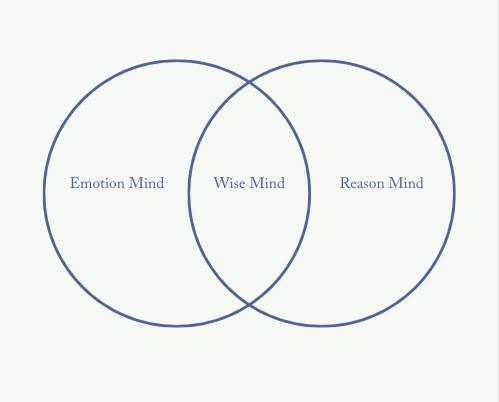Picture this: You’re sitting at your desk when you get an email from your boss asking to schedule a one-on-one meeting. Immediately, your emotions take over, and your mind spirals into a storm of assumptions. You jump to the conclusion that you’re about to be fired and start imagining worst-case scenarios. You even consider showing up to the meeting with your desk already packed.
This is an example of your emotional brain hijacking a situation.
By over-relying on your emotional brain, you let fear and anxiety dictate your reaction, clouding your ability to think clearly. The reality could be entirely different—perhaps your boss wants to discuss a new opportunity, provide positive feedback, or simply check in.
Now picture this: Imagine your partner forgets to pick up something important for dinner. Using only your rational brain, you might focus on the practical implications: dinner is delayed, plans are disrupted, and their forgetfulness feels careless. You might respond harshly, saying something like, “How could you forget? I reminded you twice!”
This is an example of your rational thinking dominating your response.
What you miss in this moment is the emotional context. Maybe your partner had a stressful day at work, is feeling overwhelmed, or simply made an honest mistake. By focusing only on the “problem” and its immediate impact, you overlook the opportunity to show understanding and support, which could help them feel seen and cared for.
Where is the balance? In the Wise Mind. Wise Mind is the balance between emotion and reason.
We navigate the world through three primary states of mind: Emotion Mind, Reason Mind, and Wise Mind. These states shape how we interpret our experiences and respond to the situations we face each day.
Think of these states as existing on a continuum. At one end, we have an Emotion Mind, driven by feelings and impulses, and at the other, Reason Mind, guided by logic and facts. In the middle is Wise Mind—a balance of both, where emotion and reason come together to help us see clearly and act intentionally. Life isn’t often black and white; it’s full of nuance. Striking a balance by blending emotion, reason, and an awareness of the bigger picture allows you to respond thoughtfully rather than react impulsively.
In Wise Mind, we honor our emotions while integrating reason, creating a balanced approach to life’s challenges. This harmony of head, heart, and context begins with mindfulness—the practice of tuning into the present moment with awareness and without judgment. Wise Mind isn’t about dismissing emotions or ignoring facts; it’s about aligning our actions with our true intentions, even in the face of intense feelings. It allows us to fully experience our emotions without letting them take over, empowering us to respond thoughtfully rather than be consumed by our reactions.
Mantra: Pause, breathe, center… enter.
The path to Wise Mind is two fold: “What” Skills to help you step into Wise Mind. These skills describe what you do to become more mindful and gain clarity:
-
Observe: Engage your senses to gather information. What do you see, hear, smell, taste, and touch? What’s happening in your mind and body? Look outward and inward—notice the full experience.
-
Describe: Clearly outline the details of your observations using specific language. Putting your experience into words creates clarity that thoughts alone cannot. We highly recommend writing these details down. Writing not only organizes your thoughts but also signals to your brain that it doesn’t need to hold onto every piece of information.
-
Participate: Move from being a passive observer to being fully connected with your experience. Actively engage by noticing your emotions, connecting with your environment, or observing another person’s demeanor. Step into the moment fully.
"How" Skills describe how to practice mindfulness and engage in Wise Mind effectively.
-
Nonjudgmental Approach: Arrive at situations like an objective reporter, focusing on the facts—who, what, where, when, and how. Try your best to use neutral and respectful language to describe yourself, others, and events. When you notice judgments arise, gently let them go.
-
One Thing at a Time: If you are feeling overwhelmed by the situation, try to direct your full attention to one thing at a time. Distractions, both internal and external, are inevitable, but practice acknowledging and then stepping away from them. If your focus divides, pause, and intentionally return to what you’ve chosen to experience. Stay grounded in the here and now.
-
Effectivness Through Honesty: Respond to situations based on what works best in the present moment, not what you wish things could be. Avoid wasting energy resisting reality. Instead, align your actions with your goals, values, and priorities, allowing them to guide you toward skillful and intentional choices.



